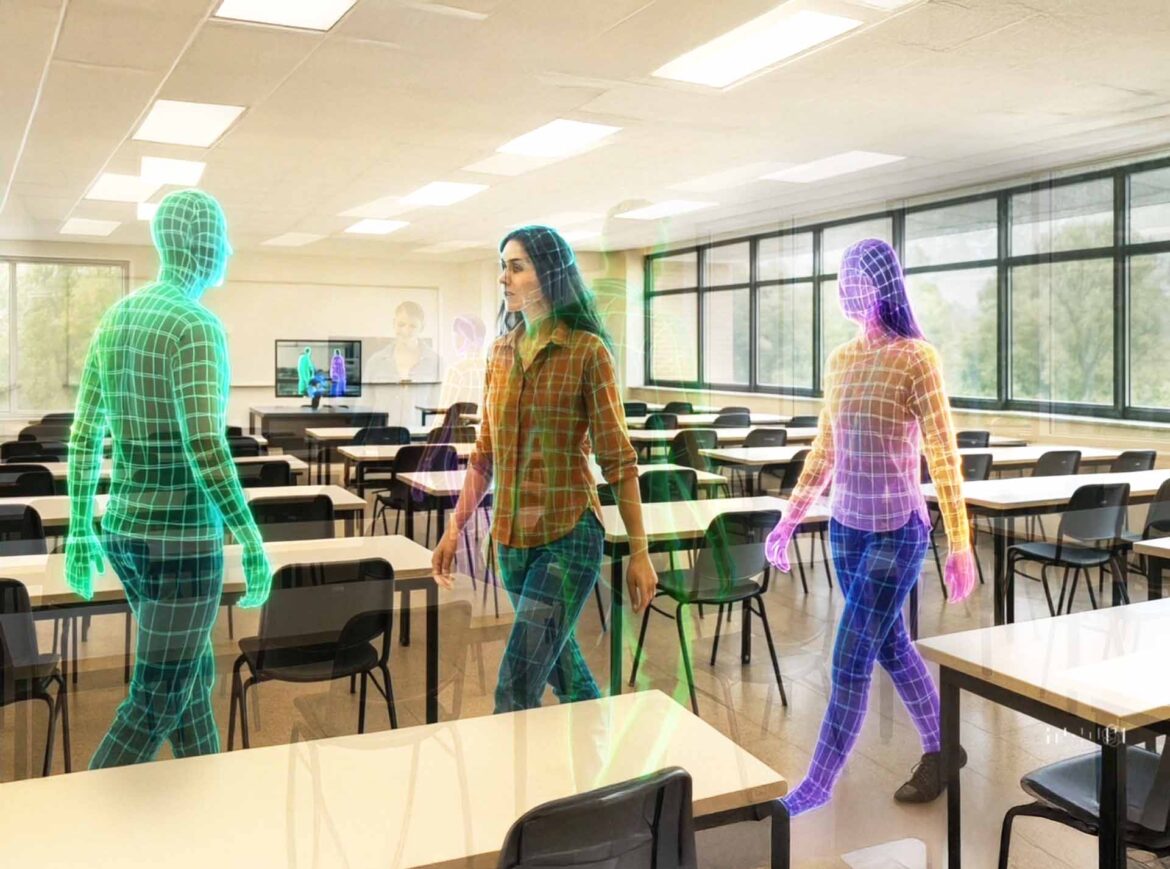How WiFi Is Revolutionizing Motion Detection
Visualization: © Ulrich Buckenlei | Illustration from the research context of MIT CSAIL’s innovation “DensePose from WiFi”
Body Language Through Walls – Thanks to WiFi
What if your WiFi router could “see” you? Not just your presence – but your posture, movements, and gestures. Without a camera. What sounds like science fiction is already a reality: the MIT CSAIL research team has developed a system called “DensePose from WiFi” that does exactly that.
- Motion detection without a camera: WiFi signals replace visual sensors.
- Works through walls: AI reconstructs posture even with obstructed view.
- Respects privacy: No image data, no invasive cameras required.
![]()
How WiFi Detects the Human Body
Source: MIT CSAIL, Visoric Research 2025 | Illustration based on scientific publications
The graphic shows how reflected WiFi signals generate a complete body model. Simple WiFi routers emit signals – the way these reflect provides information about movement, even through solid materials like concrete walls. The AI learns to interpret these signals and visualizes the motion in real time.
From Living Rooms to Factory Floors
The range of applications goes far beyond smart homes. In healthcare, falls can be detected; in manufacturing, work movements can be analyzed – without privacy concerns from cameras. In museums, offices, or hotels, visitor flows can be tracked invisibly – purely signal-based.
- Care and safety: Motion detection without video surveillance.
- Factory optimization: Motion data for process analysis and training.
- Retail and culture: Visitor interaction without invasive sensors.
![]()
DensePose WiFi: Motion Tracking via Signal Analysis
Source: MIT CSAIL 2024, Visualization by Visoric 2025 | Supplemented by research from ambient sensing and non-visual AI
The infographic shows the principle behind “DensePose from WiFi”: signal sources and receivers form an invisible mesh. Movements affect the signal structure – the AI extracts posture, position, and action from it. The technology thus replaces traditional LiDAR or camera systems – discreetly and precisely.
Privacy: More Than a Technical Issue
This new technology also raises ethical questions: Who is allowed to operate such systems? How anonymous is the data? Researchers like Ben Chimoy and Gerald Provost emphasize the need for new standards – for transparency, deactivation options, and access control.
- Invisible sensors: A challenge for data protection and education.
- Edge AI instead of cloud: Local processing to maintain data sovereignty.
- Design for trust: Users must retain control at all times.
Video: Invisible Motion Detection Explained
The following video visualizes how “DensePose from WiFi” works – from signal interpretation to 3D animation.
DensePose from WiFi: Video Summary
Video: Visoric / MIT CSAIL 2025 | Presentation and animation by Visoric
From Research to Implementation – with Visoric
The Visoric expert team supports companies, developers, and institutions in implementing AI- and sensing-based spatial intelligence.
- Strategy & Concept: Identifying meaningful use cases for AI + spatial sensing
- Design & Visualization: Implementation of interfaces, UX, and live tracking scenarios
- Integration & Training: From simulation to deployment in real-world environments
Get in touch now – and help shape the next generation of sensory intelligence!
Contact Us:
Email: info@xrstager.com
Phone: +49 89 21552678
Contact Persons:
Ulrich Buckenlei (Creative Director)
Mobil +49 152 53532871
Mail: ulrich.buckenlei@xrstager.com
Nataliya Daniltseva (Projekt Manager)
Mobil + 49 176 72805705
Mail: nataliya.daniltseva@xrstager.com
Address:
VISORIC GmbH
Bayerstraße 13
D-80335 Munich


